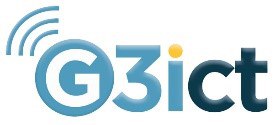Creating an Inclusive Workplace: Lessons From the Pandemic
Posted on February 08, 2022

President and CEO, Access Living
The Covid-19 pandemic has amplified long-standing disparities faced by disabled people including poverty, a fragile social safety net, inequitable healthcare and a digital divide. This impact has allowed me as a new CEO to bring our mission into sharper focus but also hit a reset button to re-imagine how and where we work.
We have been on a twenty-two month journey noting the benefits and downside of remote work, particularly for our staff with disabilities. The flexibility that virtual work offers allows employees to better support their families and children and achieve greater work-life balance. Virtual work has reduced stress on disabled staff who rely on personal assistance services for morning routines. Staff with chronic conditions and mental health disabilities have felt more focused in a self-controlled work environment without office distractions. Deaf and hard-of-hearing staff have better communication access through video captioning and on-screen sign language interpreters versus in-person meetings with masks that block facial expressions and prevented lip-reading. We also increased accessibility - particularly for staff who are blind and low vision - when we were transitioning our documents and filing systems from paper to electronic formats.
From an accessibility perspective, these learnings can be a strong argument for moving to a hybrid work model – one that balances needs and desires of staff with an in-person culture that builds community, offers a sense of belonging and best serves our consumers, particularly those without reliable digital connectivity or devices.
Creating an inclusive workplace however, means centering equity and accessibility into your physical and virtual spaces. On the virtual side, not only must the meeting and administrative platforms used by your organization be accessible, there are additional considerations in a hybrid workspace where meetings are simultaneously on a video screen and in-person. While our new conference room now includes technology to accommodate hybrid meetings, it also requires norms around seating, placement of a sign language interpreter and use of the "chat" function to ensure that everyone with a disability in that meeting can participate.
We are in the early stages of reimagining our interior spaces that will accommodate a range of configurations – from private Zoom spaces and small group collaborative spaces to large hybrid community meetings. We seek office furniture and products that are adjustable, adaptable, moveable and comfortable for the widest range of disabilities and body types. Even the seemingly smallest details such as fabric textures, patterns and color contrasts, furniture height, weight and firmness can affect a disabled person’s experience.
There is no handbook on how to create a fully accessible hybrid workplace, but engaging staff from a cross-disability perspective for ideas and product testing on both the physical and virtual side is critically important. Seeking input across all functions of the organization is invaluable to better understanding how people work. In these unpredictable and changing times, embracing mindset of flexibility and openness to ideas is important in developing a hybrid plan. Set-backs in your plans should not be seen as failures but rather learning opportunities to move you towards a workplace that is accessible, inclusive and functional for everyone because truly hitting a "reset button" is not a singular action but a journey we must all be on together.
About Access Living
Access Living is a Chicago-based non-profit center of service and advocacy for people with disabilities, run by people with disabilities.
This blog post is part of a collaborative effort of G3ict, Steelcase, and other global partners to understand, define, and support more inclusive workplaces. For more information, please go to this link Inclusive Workplace Community of Interest | International Association of Accessibility Professionals (accessibilityassociation.org).





























